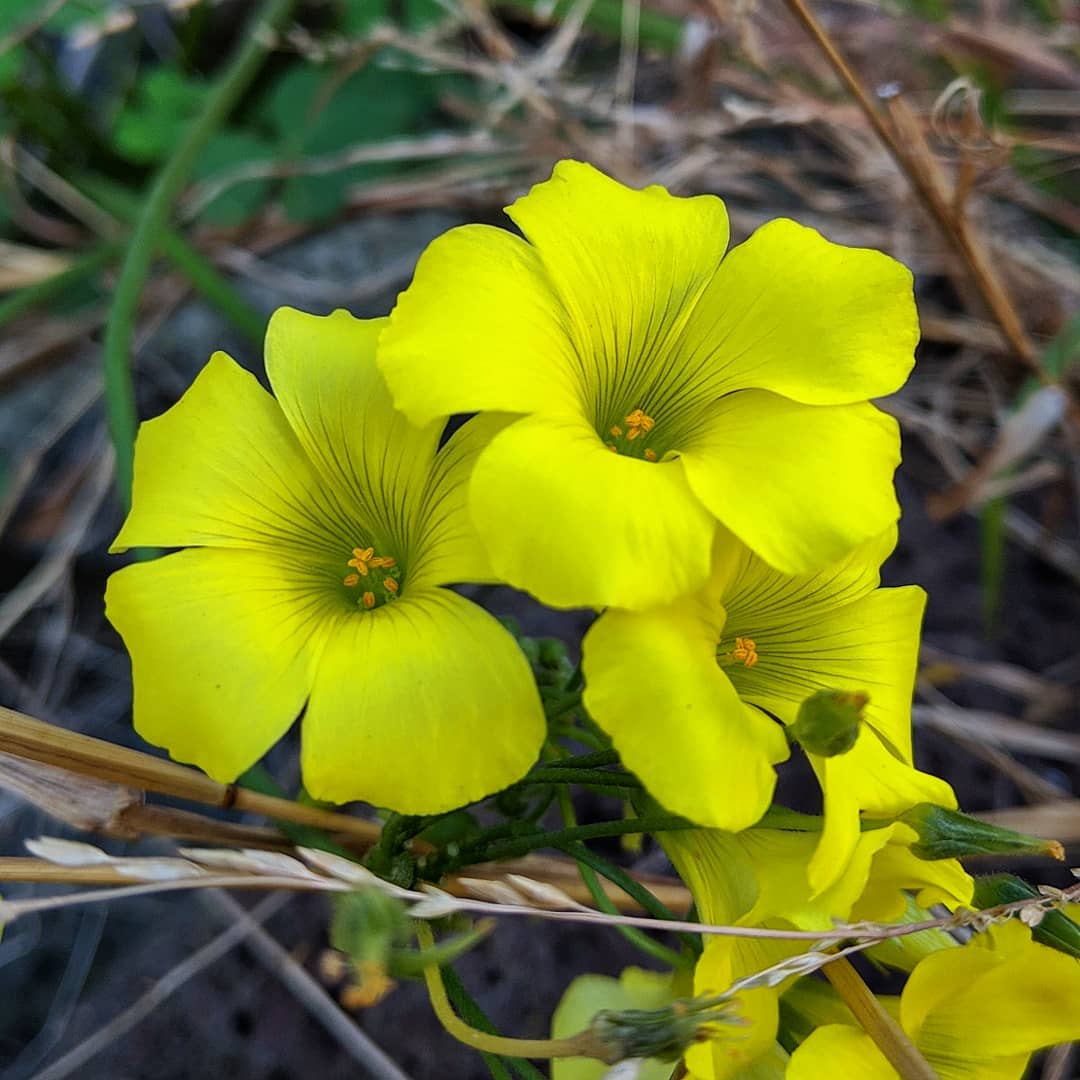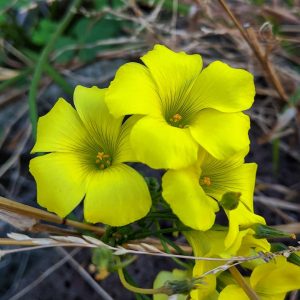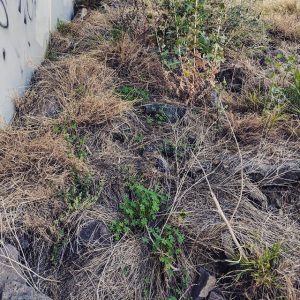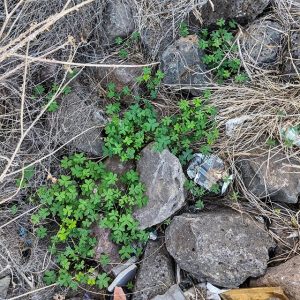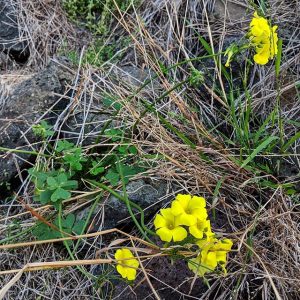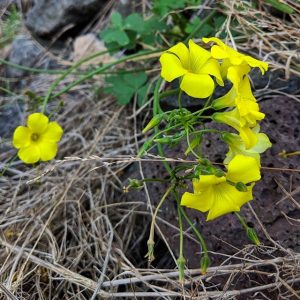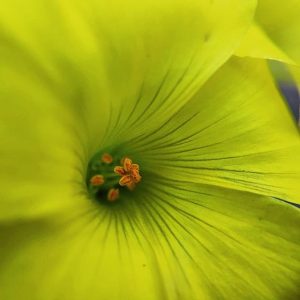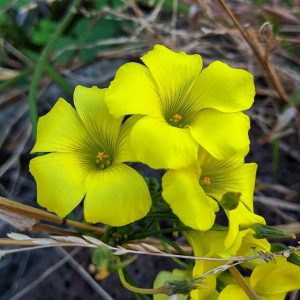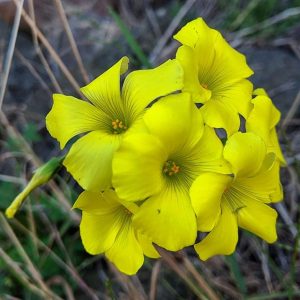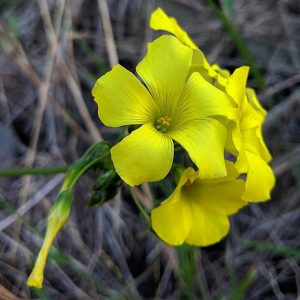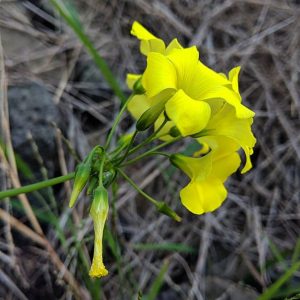Soursob (Oxalis pes-caprae), blooming very early in a sheltered position at the Werribee River crossing of the Main Outfall Sewer.
This alien wood sorrel poses strange mysteries for botanists. First, the five-fold (pentaploid) chromosome count of most exotic weed populations is almost entirely absent from native populations of the species within South Africa. This suggests that the weediest version of the species arose overseas, presumably in Southern Europe. There, early specimens were passed around botanic gardens and private collections in the 18th and early 19th century before the species convulsively spread throughout that basin and worldwide to Australia and other suitable host environments.
Second, although generally incapable of setting seed and spread only by bulbils, invasive plants have nonetheless been found to display surprising genetic diversity, implying a rapid accumulation of mutations or a capability to achieve an asexual genetic rearrangement by means undetermined. Whatever the source of this flexibility, it has presumably contributed to or even triggered the plants’ invasiveness, allowing an unprecedented degree of adaptation in purportedly clonal populations worldwide.
Soursob likely arrived in Australia as both an intentional and accidental introduction in nursery material and transfers to Australian botanical gardens; for instance, the first herbarium record in Tasmania was made at the then-Royal Society Gardens (now RTBG) in 1875. The plant, which can be toxic to stock, was spread rapidly in South Australia and NSW from about 1900, but was only collected in Melbourne and elsewhere in Victoria from the 1940s. While the genetic origin and diversity of the Mediterranean populations have been subject to extensive recent review, the genetics of Australian populations appear not to have been surveyed and would no doubt be of considerable interest.
The photographed plants (of which only one was in flower) were established on semi-consolidated riprap reinforcing a narrow embankment lying between the old and new sewer viaducts.
View Original Post on Instagram
Search for information about Oxalis pes-caprae in the Flora of Victoria
View information and occurrences of Oxalis pes-caprae on the Atlas of Living Australia
